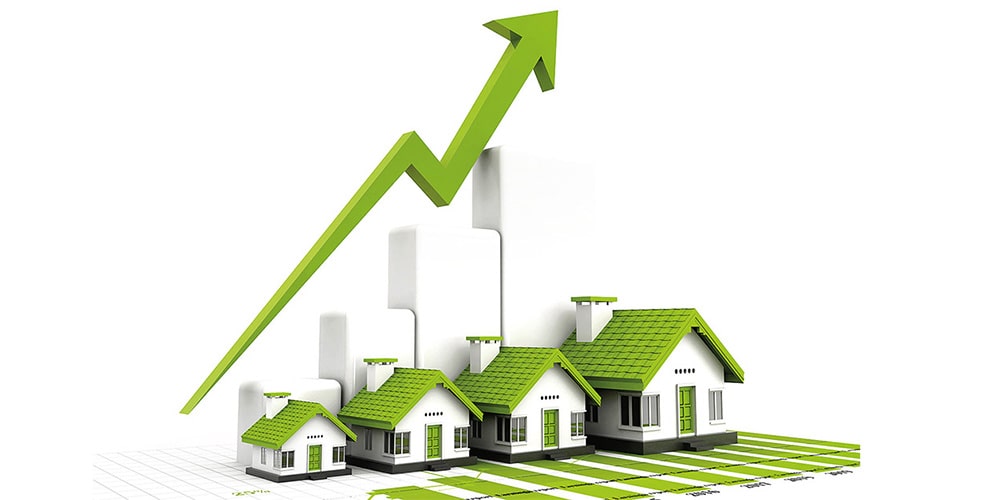Noida’s housing market has undergone an important upswing over the past five years, rebounding from the pandemic slump to a phase of robust growth. Below is a detailed Noida real estate analysis covering price trends, supply-demand dynamics, notable projects, policy impacts, infrastructure boosts, changing buyer preferences, and the influence of COVID-19 on Noida’s residential real estate.

Property Price Trends (Apartments, Villas, Plots) 2020–2025
Noida’s residential property prices have nearly doubled in the last five years. The average price increased to about ₹9,200 per sq ft by Q1 2025 from around ₹4,800 per sq ft in early 2020. It was a 92% rise. This far outpaced many other Indian markets and even other NCR cities (Greater Noida saw a 98% rise in the same period).
The surge was especially sharp from 2021 onward, as the market recovered post-lockdowns and then entered a boom phase in 2022–2024. Quarterly indices show a steady uptrend without any significant dips, reflecting strong demand. For instance, MagicBricks data shows Noida’s average rates jumping roughly 80% between Q4 2022 and Q4 2024 alone—a remarkable climb in a short time. Noida’s residential prices vary widely by property type and segment:
Apartments (Multistorey)
The bulk of Noida’s housing and apartments averages around ₹11,000 per sq ft as of end-2024. Mid-range apartment prices in prime sectors have reached ₹8,000–₹12,000 per sq ft, whereas luxury high-rises command even higher rates (some new luxury condos are priced above ₹15,000 per sq ft). Overall, apartments have seen consistent appreciation; the average flat price rose from ₹4,800 in 2020 to ₹9,200 in 2025. Demand for ready-to-move, well-located flats pushed values up, especially in 2022–2024 when inventory tightened (more on that below).
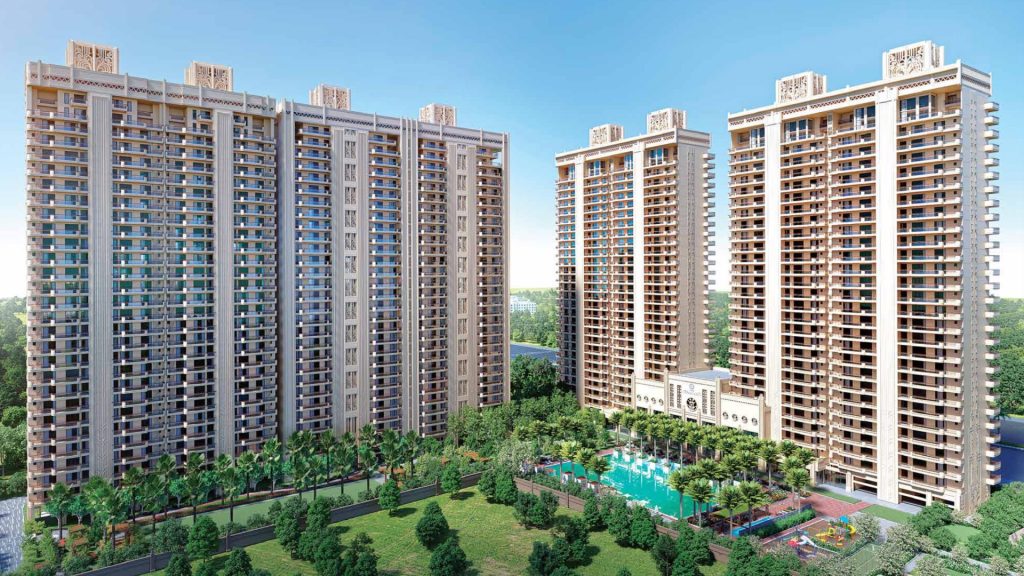
Villas & Independent Houses
These are relatively niche in Noida (mostly in designated sectors or townships), but carry a hefty premium. As of late 2024, independent houses average about ₹18,100 per sq ft, and luxury villas about ₹19,600 per sq ft for built-up area. This is 60–80% higher per sq ft than typical apartments. Limited supply and larger plot sizes mean absolute ticket prices for villas are very high (often ₹3–10 crore+). This segment also saw appreciation as affluent buyers post-COVID sought bigger homes—however, growth was less frenetic than apartments due to the smaller buyer pool.
Plots/Land
The price of residential plots in and around Noida has soared with investor interest, especially in emerging areas. Within Noida city, developed sectors have high land rates (governed by circle rates and auctions). In peripheral zones (like along the Yamuna Expressway towards Jewar airport), land values skyrocketed between 2020 and 2024. One study noted that along the Yamuna Expressway corridor, land prices jumped from about ₹1,200–1,300 per sq ft in 2019 to ₹6,900–7,100 in 2024—an astounding 450% increase—driven largely by speculation around the upcoming airport and new infrastructure. While that is an extreme case in the outskirts, it underlines the trend: plotted developments have seen steep appreciation. Even in Greater Noida (Noida Extension areas), plot rates roughly doubled as investor demand picked up. In core Noida, plot availability is low (the city is mostly developed), but any new plot allotments by authorities see high interest due to scarcity.
To summarize, Noida’s residential prices have shown an upward trajectory across the board. Apartments (the primary market) have led this growth in sheer volume and have nearly doubled in value in five years. Premium properties (villas, luxury flats) saw healthy appreciation too, maintaining a large price gap over mid-segment housing. Land prices experienced the highest relative jump, particularly in the greater Noida region, thanks to infrastructure-led speculative demand. Overall, the period 2020–2025 has been marked by strong price appreciation, especially after 2021, making Noida one of India’s best-performing realty markets in terms of price growth.
| Period | Average Price in Noida (₹ per sq ft) |
| Q1 2020 | ₹4,795 (pre-COVID baseline) |
| Q1 2025 | ₹9,200 (current) |
It shows the 5-year change resulted in a +92% increase in prices.
Demand–Supply Dynamics and Inventory Overhang
Housing Demand
Buyer demand in Noida has been robust through the past five years, with a notable dip during the early 2020 lockdown followed by a strong rebound. By 2021, housing sales in Noida had bounced back to pre-pandemic levels – over 2,700 flats were sold in Noida (and ~2,800 in Greater Noida) in just Jan–Sep 2021, according to PropTiger data. Developers saw surprising momentum even as the second COVID wave subsided; “weeks after emerging from the second wave, potential buyers were back house-hunting,” noted studies by PropTiger and Liases Foras.
In fact, 2021 overall sales in NCR (Delhi region) reached ~1.4 lakh units, and 2022 and 2023 only improved further nationally. Demand was buoyed by record-low home loan interest rates (~6.5–7% in 2021) and the pressing need for bigger homes due to work-from-home, which together “led to [a] surge in sales.” This trend continued into 2022–2024 with end-users and investors actively buying, resulting in high absorption of inventory.
Housing Supply and Inventory
On the supply side, Noida had been carrying a large overhang of unsold inventory pre-2020, owing to the building glut of the 2010s and many stalled projects. However, the last five years saw a remarkable cleanup of this excess. Unsold housing stock in Noida dropped by 72% – from roughly 18,148 units in Q1 2020 to just over 5,000 units by Q1 2025. This was the sharpest reduction among major NCR cities (NCR overall unsold fell 51% in the same period). As a result, the inventory overhang (the estimated time to sell current stock) plummeted – from a peak of nearly 88 months around 2020 to only 17 months by early 2025.
A healthy market typically has 18–24 months of inventory, so Noida’s overhang improving to 17 months indicates a dramatic shift from oversupply to a far better balance. This improvement was driven by steady sales and limited new launches from 2020 to 2022, which allowed the backlog to clear. By 2023 and 2024, builders regained confidence to launch new projects, but sales kept pace to prevent inventory buildup.
New Launches
New residential supply in Noida/NCR started picking up momentum after 2021. In 2024, NCR saw 53,000 units launched, a 44% jump from 2023’s new supply. Noida contributed significantly to these new launches, especially in the mid-to-high-end segment (as discussed later, many luxury projects were launched post-2020). It’s noteworthy that the composition of new supply also shifted: pre-2020, affordable housing (sub-₹40 lakh) dominated launches, but post-COVID the focus shifted to premium housing. By 2024, “the maximum supply share [had] shifted to luxury and ultra-luxury housing,” with 59% of new launches in NCR 2024 in the ultra-luxury segment (>₹2.5 Cr) (up from just 4% in 2020). Noida mirrored this trend – many developers launched high-end projects targeting upgrader and investor demand.
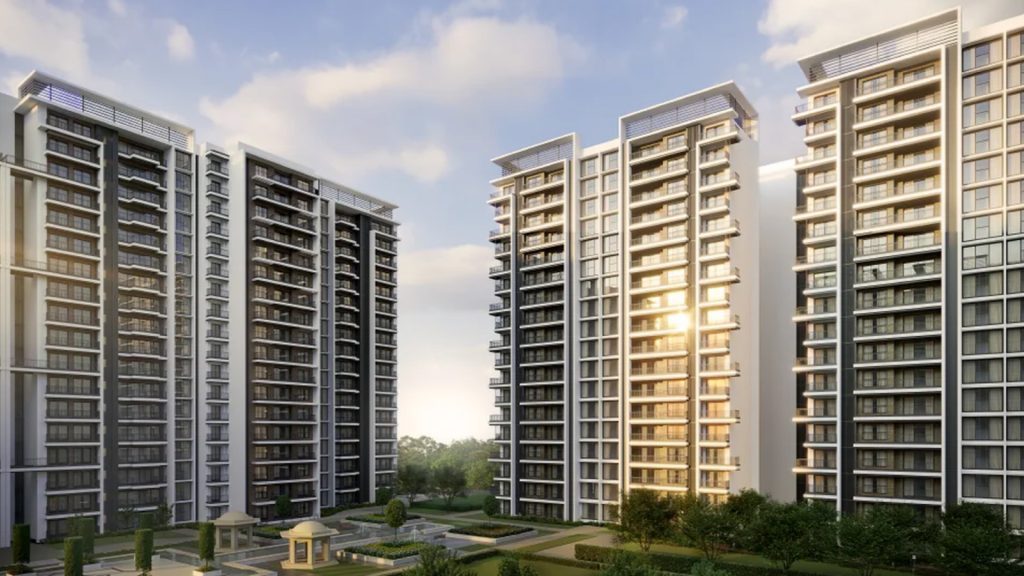
In summary, demand has outstripped supply in Noida in recent years, leading to a significant drawdown of unsold inventory. The market moved from a buyer’s market (with excess options and long overhang) to a more balanced or even seller-favoring market by 2024. Inventory overhang falling from 7.5 years to just 1.5 years in five years underscores how much the demand-supply dynamics have improved. This shrinking unsold stock, combined with renewed but prudent new supply, has underpinned the strong price growth observed.
Major Residential Projects (2020–2025): Launches and Completions
The past five years have seen multiple major residential projects taking off in Noida, as well as the completion of some long-stalled projects:
Entry of Big-Name Developers
Noida attracted new entrants from across India. For example, Prestige Estates (Bangalore-based) chose Noida for its first North India project – a 2.2 million sq ft township launched in 2023. Prestige’s “Bougainvillea Gardens” in Sector 150 was among these launches. Similarly, Godrej Properties expanded aggressively in Noida, launching projects like Godrej Woods (Sector 43, launched 2021) and Godrej Palm Retreat/Tropical Isle (Sector 146/150). Tata Realty (Tata Value Homes) launched Eureka Park in Sector 150. Gurgaon-based M3M made headlines by acquiring land in Noida and launching a high-end mixed project “M3M The Cullinan,” in Sector-94 in 2023. These entries brought large-scale developments (often 1000+ units) and upped the luxury quotient of Noida’s market.
High-End and Luxury Projects
Noida saw a boom in luxury residential projects during 2020–25. Notable examples include ATS Knightsbridge (Sector 124) – ultra-premium apartments that were completed around 2022; Kalpataru Vista (golf-course facing luxury towers); Gulshan Dynasty (Sector 144, a luxury low-density project), and County 107 (a high-end project in Sector 107). Many of these were launched pre-2020 and reached completion during this period, adding supply in the ₹2–10 Cr category. On the new launch front, besides the developers mentioned above, local firms like Ace, Mahagun, and ABA Corp also unveiled premium towers (e.g., Ace Starlit in Sector 152 and Mahagun Medalleo in Sector 107). This wave of luxury supply catered to affluent buyers and NRIs, and was encouraged by rising demand for spacious, amenity-rich homes.
Affordable and Mid-segment Projects
While luxury grabbed attention, Noida also saw completion of numerous mid-segment housing projects that had been under construction. Sectors 74–78, 137, 150, etc., witnessed possession handovers in projects by Gaursons, Supertech, Prateek, Nirala, SKA, and others. Noida Extension (Greater Noida West) in particular had many project completions, where large townships like Gaur City, ACE City, and others delivered thousands of apartments between 2020 and 2023. These completions helped reduce the inventory overhang and gave buyers ready-to-move options.
Stalled Projects Revival
A crucial development in this period was the resolution of some long-stalled projects. The biggest example is the Amrapali Group’s projects, which had been stuck for years, leaving around 40,000 homebuyers in limbo. In a landmark move, government-owned NBCC was tasked by the Supreme Court to take over and complete these projects. By late 2024, NBCC had successfully completed about 22,500 pending units of Amrapali projects in Noida and Greater Noida and committed to deliver the remaining by March 2025. This was a massive relief for affected homebuyers and injected confidence in the market. Likewise, other stalled developments (like certain Unitech and Jaypee projects in NCR) also saw progress under court-monitored processes. Noida’s reputation, tarnished by builder insolvencies, got a boost as these homes finally neared completion.
Notable Events
In August 2022, the infamous Supertech Twin Towers in Noida’s Sector 93A were demolished after a Supreme Court order found them violating building norms. While this was a demolition (not a launch), it was a high-profile event in Noida’s real estate scene. The Twin Towers case, culminating in their implosion, sent a strong signal about adherence to regulations. It also freed up that land for redevelopment (the area is to be converted to green space for now). The event had an indirect positive impact: buyers became more cautious to stick with reputable, RERA-registered projects, and developers became wary of flouting norms.
In summary, Noida saw a healthy mix of new launches and project completions in 2020–2025. The entry of reputed developers and the launch of big projects signaled confidence in Noida’s market potential. Simultaneously, long-pending projects reaching completion addressed past baggage. Major infrastructure-driven townships (like those along Noida Expressway and in Greater Noida West) continued to expand. By 2025, Noida’s residential landscape features everything from affordable apartments to ultra-luxury skyscrapers, with several marquee developments shaping its skyline.
Noida Real Estate Policy and Regulatory Influences
Government policies and regulations in the last five years have played an important role in Noida’s real estate trajectory – improving transparency, resolving legacy issues, and affecting buyer sentiment:
RERA Enforcement
The RERA Act, 2016, became fully operational in 2017 and greatly influenced Noida’s housing sector. RERA compelled developers to register their projects, offer regular updates, and stick to construction timelines. These initiatives boosted buyer confidence in new launches. Many aggrieved buyers of delayed projects approached UP RERA for redressal, leading to pressure on builders to deliver. The stricter accountability curbed the malpractices of the past. By 2020–22, RERA’s impact was evident as fewer new projects stalled and developers focused on completion to avoid penalties. In essence, regulatory oversight improved trust, encouraging buyers back into the market post-2020.

Noida Authority Actions
The Noida Authority (local government body) took a tougher stance on errant builders. Notably, in 2021, it halted property registrations (conveyance deeds) in projects where builders had not cleared land dues to the authority. This created a “registry logjam” that worried buyers, as thousands who bought flats couldn’t get them registered in their name. Developers even went to court against the Noida Authority’s order.
While the situation was eventually resolved (with many developers structuring payments to clear dues), this policy move signaled that authorities would not hesitate to penalize defaulting builders, even if it meant short-term pain. On the flip side, to boost sales, the UP state did reduce some stamp duty or circle rates in certain periods (for instance, there were demands to cut stamp duty to 5% from 7% for a while, though in Noida it remained around 7%). Overall, the Authority’s firm approach pushed developers to comply with financial and building norms.
Stalled Project Interventions
As mentioned, the Supreme Court and government intervention in Amrapali projects was a game-changer. The court’s actions (appointing NBCC, etc.) set a precedent for rescuing stalled projects, which is a positive regulatory development. Similarly, there were crackdowns on builders like Unitech and others via courts. In Noida Extension, authorities worked with the National Company Law Tribunal (NCLT) processes to resolve insolvency-hit projects. These measures improved the credibility of the market – buyers saw that the government and courts were actively protecting their interests, which encouraged end-user investment.
COVID-19 Relief Measures
During the peak of the pandemic, both central and state governments provided certain reliefs. The RBI cut interest rates significantly (bringing home loan rates to multi-decade lows around 6.5%), which was a monetary policy boost that directly impacted housing demand. The central government also extended the PMAY-Urban (Pradhan Mantri Awas Yojana) credit-linked subsidy scheme for affordable homebuyers till March 2022, allowing first-time buyers in Noida’s lower-end market to avail interest subsidies.
The UP government, for its part, gave time extensions to developers for project completion during the COVID disruption (treating it as a “force majeure” period) so that projects wouldn’t lapse deadlines – this helped builders avoid penalties and focus on restarting construction.
Planned Urban Expansion
Policy-wise, the state unveiled big plans for the region’s future. In 2022-2025, U.P. government announced the development of “New Noida” – an expansive urban development plan of five new townships over ~56,000 hectares east of present Noida, aligned with the upcoming Jewar airport. While this is a long-term plan (next 10+ years), its announcement signals government commitment to make the Noida region a major urban-industrial hub. Such plans can influence current market sentiment (with investors anticipating future growth corridors).
Already, the government has been aggressively acquiring land around the airport and inviting industries (electronics, data centers, etc.) to the Greater Noida/Yamuna Expressway regions, which indirectly benefits Noida’s housing demand as jobs grow.
In essence, policy interventions between 2020 and 2025 largely instilled confidence and stability in Noida’s residential market. RERA and judicial actions checked the supply-side malpractices; low interest rates and subsidies spurred the demand side. The period also had its share of regulatory pain points (e.g., the registry freeze), but those were temporary and ultimately led to better compliance. Going into 2025, Noida’s real estate stands on a more transparent and regulated foundation than ever before.
Infrastructure Developments and Their Impact
Infrastructure upgrades have been a key driver of Noida’s real estate growth. Over 2020–2025, several major infrastructure projects either materialized or were initiated, positively influencing property markets:
Noida Metro Expansion
The Noida Metro’s Aqua Line (connecting Noida and Greater Noida) became operational just before this period (2019), and further extensions have been planned/started. Notably, a 5 km Aqua Line extension from Noida Sector-51 to Knowledge Park V (Greater Noida West) was approved, aimed at directly bringing metro connectivity to the vast residential clusters of Noida Extension. Construction on this link is underway, which will greatly benefit thousands of apartments in that area upon completion.
Another project is an 11.5 km Metro link. This link connects Noida’s Botanical Garden to Sector-142 and the Aqua Line with Delhi Metro’s Blue Line. Consequently, it improves connectivity between central Noida and expressway sectors. Moreover, there are plans to connect Greater Noida to the Jewar Airport through metro and high-speed rail. As these metro projects progress, they have been pushing up realty values in the influenced zones – for example, sectors in Noida Extension expecting a metro station have seen renewed buyer interest and price appreciation in anticipation.
Roads and Expressways
Noida already benefits from excellent road infrastructure (the Noida–Greater Noida Expressway, Yamuna Expressway, and proximity to multiple highways). In this period, further improvements took place:
The Noida–Greater Noida Expressway saw new underpasses and widenings to ease traffic, enhancing commutes for residential hubs along it (Sectors 93, 137, 150, etc.).
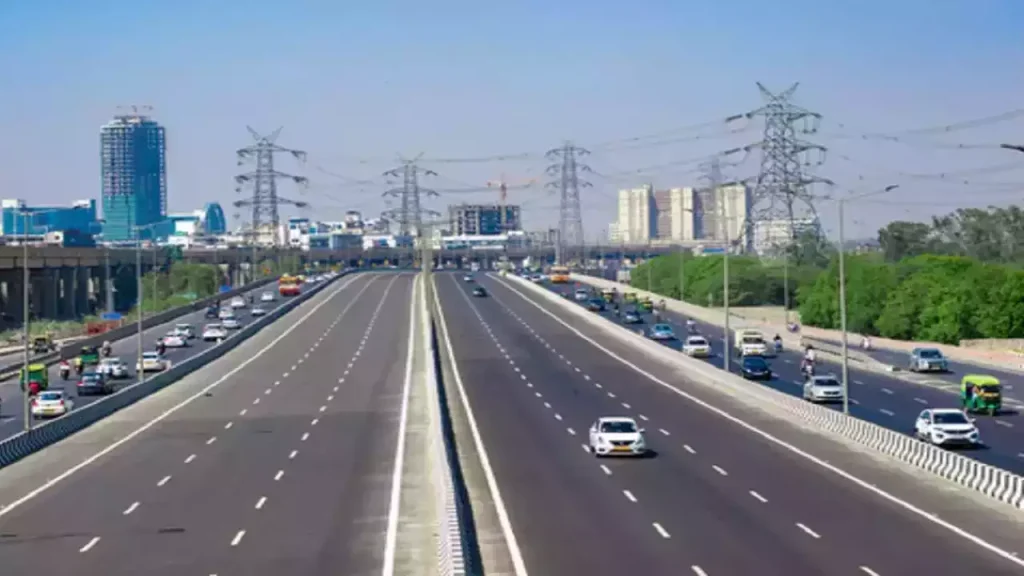
The Yamuna Expressway (connecting to Agra) became a hotbed of development due to the airport coming up. The Yamuna Expressway Authority undertook plans for new link roads and proposed an elevated road to improve connectivity from central Noida to Jewar. Travel times from Noida to the Jewar airport area are set to reduce, which already boosted the attractiveness of projects in Southern Noida/Greater Noida.
The long-delayed Faridabad–Noida–Ghaziabad (FNG) Expressway gained traction. By 2024, about 70% of the Noida portion of FNG was completed, and fresh deadlines (around 2027) were set for its full completion. Once finished, FNG will directly link Noida with Faridabad and Ghaziabad, significantly improving intercity connectivity in NCR. Even pending completion, the prospect of FNG has been driving up real estate demand in Noida sectors along its route (e.g., sectors near Noida Sector 63 and Noida Extension areas that will get quicker access to Faridabad).
Internal road upgrades, new flyovers (such as the elevated road connecting Noida Expressway to Kalindi Kunj, etc.), and improved public transport services (e.g. new bus routes) also enhanced the livability of Noida.
Noida International Airport (Jewar)
The single most impactful infrastructure project in the vicinity is the Noida International Airport at Jewar (about 40 km from Noida city). Announced some years back, it achieved major milestones recently – land acquisition was completed, and construction began, with Phase 1 expected to be operational by 2024–25. This upcoming airport (slated to be one of India’s largest) has been a game-changer for real estate sentiment. Analysts have long predicted it will “revive the property market in nearby areas such as Noida, Greater Noida, and Yamuna Expressway.” That prediction started manifesting: the anticipation of the airport spurred a land rush along the Yamuna Expressway (as noted, land and flat prices there have jumped massively).
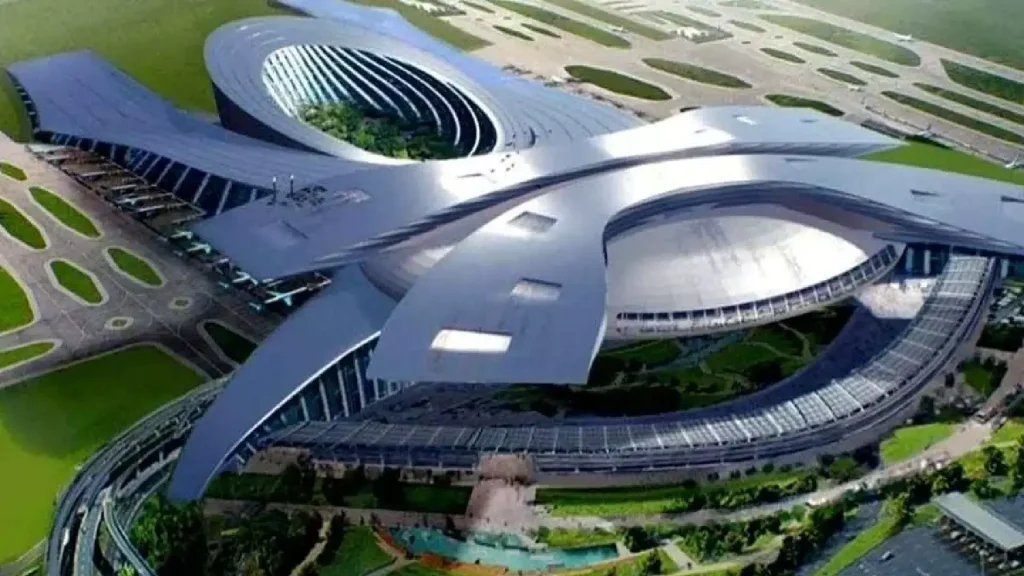
Within Noida, the airport’s influence is indirect but significant – it has made Noida a more central location in NCR’s geography (as Noida will be equidistant to two international airports: IGI in Delhi and Jewar airport). This is attracting businesses and residents alike. As one Economic Times report noted, “Noida International Airport’s 2025 launch will drive regional development… the region’s transformation is already evident in property prices, which have nearly doubled in three years”. Many investors have bought homes in Noida/Greater Noida purely banking on the future airport-driven appreciation and improved connectivity.
Industrial and Commercial Infrastructure
Noida also saw a boost in commercial development – new IT parks, data center parks (Noida is emerging as a data center hub in India), and the establishment of large offices (companies like Microsoft, Samsung, TCS, Infosys, etc. expanded campuses in or near Noida). This economic infrastructure growth directly correlates with housing demand. The UP-government’s initiatives to attract industry (e.g., Electronics Manufacturing Cluster in Yamuna Expressway region, Toy Park, and Film City project in Greater Noida) have made Noida a job magnet, which in turn increases residential absorption. Infrastructure like the Delhi-Mumbai Industrial Corridor (DMIC) also touches the region, further integrating Noida into a national logistics network.
In summary, infrastructure developments have significantly enhanced Noida’s real estate appeal. Metro expansions improve daily commute convenience, expressways and new airports improve regional and national connectivity, and the growth of commercial hubs creates employment-driven housing demand. During 2020–2025, each update on infrastructure fronts often boosted property inquiries and values in Noida. Noida, as a modern city, is well-connected. It has emerged as a preferred destination for NCR homebuyers who prefer better connectivity and future growth prospects.
Changing Buyer Preferences
Buyer preferences in Noida have notably shifted over the last five years, influenced in large part by the pandemic experience and evolving lifestyles. Key trends in what homebuyers are seeking:
Preference for Larger Homes
There has been a clear shift towards bigger residential units. Before 2020, 2BHKs (2-bedroom apartments) were often the most in-demand configuration in Noida’s apartment market. Post-pandemic, this reversed. Industry surveys in late 2023 showed that “almost 50% of home buyers prefer buying 3BHK homes (vs. 38% for 2BHK.)” In Noida specifically, MagicBricks data confirms 3BHKs dominate demand – about 47% of buyer searches – compared to ~38% for 2BHKs. Developers have responded by increasing the supply of 3BHK and even 4BHK units (Noida’s supply is ~52% skewed to 3BHK now).
This trend is a direct outcome of the work-from-home (WFH) culture and lockdowns: families realized the need for an extra room or workspace and more breathing space. Even within existing homes, features like an extra study, bigger balconies, or a small lawn (for ground-floor units) became highly coveted.
Work-From-Home Influence
The WFH and hybrid work trend, which took off in 2020, had multiple effects on housing preferences:
Location vs. Size Trade-off
Some buyers became willing to live slightly farther from central workplaces (since daily commuting was less critical) in exchange for larger or more affordable homes. This benefited Noida’s peripheral areas. For instance, many buyers who worked in Gurgaon or Central Delhi considered Noida/Greater Noida homes since they didn’t need to commute daily. Surveys noted many home seekers were open to moving to suburban areas to get larger homes within their budget.
Home Amenities
With people spending more time at home, the demand for amenities and designs that support remote work rose. Buyers started looking for an additional study/office room, reliable internet infrastructure in the residential complex, soundproof spaces, etc. Developers in Noida began marketing features like business centers or co-working spaces within larger townships, and many new apartment floor plans now include a study.
Balconies and Open Spaces
Another preference shift – “75% of property seekers now want balconies,” as per a 2023 consumer survey. Indeed, after being cooped up during lockdowns, buyers put a premium on open-air private spaces (balconies, terraces) and green common areas. Noida’s projects, which offer large balconies, parks, jogging tracks, and township layouts with low density, saw increased demand.
Ready-to-Move vs. Under-Construction
Buyer preference tilted strongly towards ready-to-move-in (RTM) properties during this period. Given the history of project delays in Noida, plus the uncertain environment of COVID, many homebuyers chose completed or nearly ready homes to eliminate construction risk. A survey in NCR indicated 75% of homebuyers preferred ready-to-move properties, with only ~20% open to under-construction if delivery is within 1–2 years. This preference put pressure on developers to finish projects; it also led to a price premium for RTM units. However, by 2022–23, as confidence returned, under-construction sales picked up again (especially for branded projects with trust), helped by flexible payment plans and slightly lower prices. Still, the end-user market in Noida remains skewed toward completed homes for safety.

Quality and Lifestyle Upgrades
Post-pandemic buyers have also shown a willingness to spend more for quality-of-life upgrades. Health and wellness amenities (like gyms, sports facilities, dedicated work-from-home lounges, air filtration systems, etc.) became selling points. There’s also a trend of nuclear families upgrading from apartments to builder floors or villas to get more privacy – evidenced by increased demand for builder floors in Noida (though apartments still dominate due to sheer supply volume). Additionally, many tenants turned into homeowners after COVID, driven by the security of owning a home. Surveys in 2021 found end-use (self-living) purchases up, as families realized the importance of owning a house in crises.
In summary, Noida’s buyers today are more discerning and skewed towards larger, better-equipped homes than they were five years ago. The pandemic profoundly impacted preferences: space and wellness have overtaken mere cost considerations for many. 3BHKs and even 4BHKs see higher uptake now, and projects advertising generous open spaces, home offices, and ready possession find favor. This shift has guided developers to adapt their product mix – for example, by launching spacious apartments and low-density projects to cater to the post-COVID consumer mindset.
Impact of COVID-19 and Economic Changes on the Market
The COVID-19 pandemic (2020–2021) and subsequent economic shifts have had a discernible impact on Noida’s housing market trajectory:
Immediate Pandemic Shock (2020)
When COVID-19 struck in early 2020, real estate activity nearly froze for a few months. Lockdowns halted construction sites and prevented home visits by buyers. Q2 2020 saw minimal transactions – many launches were postponed, and sales offices moved to digital mode. Prices in Noida remained largely static during the initial phase (developers offered discounts and flexible plans to retain interest, rather than officially cutting prices).
According to a report, despite the pandemic onset, there was only a slight price appreciation in 2020 for Noida region properties– meaning the market held its prices even in low activity. By mid-to late 2020, as lockdowns eased, pent-up demand started translating into sales. The psychological impact of the pandemic also kicked in: people realized the value of owning a home (especially one with more space) versus renting. This new end-user intent set the stage for a rebound.
V-shaped Recovery (2021)
In 2021, housing sales in Noida bounced back strongly. As noted, studies found 2021 “relatively better for real estate players in Noida and Greater Noida” than expected. Two key factors drove this: historically low interest rates (RBI’s rate cuts made home loans very cheap, often <7% interest in 2021, the lowest in 15 years) and the aforementioned work-from-home push for larger homes. Additionally, the economy recovered after the first wave, and the second wave (though deadly in April-May 2021) did not dampen buyer enthusiasm for long – by Q3 2021, site visits and bookings were in full swing.
Developers, in fact, reported better-than-expected sales in the festive season of 2020 and 2021, as serious buyers took advantage of deals. Many who held off purchases in 2020 came forward in 2021, resulting in what was essentially two years of demand compressed into one. This marked the beginning of the upcycle that continued into 2022–24.
Rising Construction Costs
One economic side effect during this period was a sharp increase in construction material costs (steel, cement, etc. saw price surges in 2021–22 due to global supply chain issues and commodity inflation). This increased the input costs for builders in Noida, who in turn started hiking property prices for new phases and new launches to maintain margins. Thus, inflation in construction actually contributed to an uptick in housing prices from 2021 onwards – properties became costlier to build. Buyers who bought early in under-construction projects benefited as later phases were priced higher. By 2023, construction cost inflation stabilized, but the new benchmark prices remained.
Post-2022 Interest Rate Hikes
In 2022, to combat inflation, the RBI began raising policy rates, which resulted in home loan rates climbing back up (towards 8.5% by 2023). This incrementally increased the cost of buying for consumers. However, the demand in Noida remained resilient despite these rate hikes – the momentum from 2021 carried through. Some impact was seen in the affordable segment (buyers on tight budgets felt the pinch of higher EMIs), but the mid-to-upper segments continued to see high demand.
In fact, the market tilt towards mid/high-end housing insulated it to a degree; as one report noted in early 2023, the housing boom was “driven more by demand for luxury projects rather than affordable options.” So, even as interest rates rose, those purchasing premium homes (often higher-income individuals) were less deterred. The affordable housing sales did slow somewhat in 2022–24 compared to the luxury segment.
Overall Economic Climate
Noida’s housing benefited from the broader economic recovery of India. By 2022, GDP growth had resumed, jobs were back, and consumer confidence was high. The IT/ITES sector (a big homebuyer group in NCR) did well with hiring and salary growth, providing the fuel for residential purchases. Additionally, investors returned to real estate, seeing its stability during turmoil – some moved funds from volatile assets (like stock markets) to property as a safe haven. NCR also saw a return of NRI investments and HNI money into real estate in this period, which contributed especially to high-end project sales (Noida saw sizeable NRI interest due to comparatively reasonable rates and future prospects like the airport).
COVID’s Lasting Impact
The pandemic’s enduring legacy in Noida real estate is the end-user focus it brought. Developers and brokers noted that a higher proportion of buyers in 2020–2023 were end-users (actual occupants) rather than pure investors, compared to the previous speculative era. Families prioritizing health, stability, and ownership drove the market. Also, the concept of housing as a necessity and an investment was reinforced – unlike some previous downturns, real estate emerged from COVID not as a depressed sector but as one of the early revival stories. Government stimulus (low rates, etc.) helped significantly in this regard.
In conclusion, COVID-19 initially disrupted Noida’s real estate but ultimately acted as a catalyst for growth. It reshaped consumer priorities in favor of homeownership and better homes, which, coupled with supportive economic measures, led to a strong resurgence in the market. The years following the pandemic have seen Noida’s residential sector not only recover lost ground but surge to new heights in sales and prices. By 2025, the market stands on solid footing – marked by improved fundamentals, lessons learned in resilience, and a pipeline of infrastructure and development that bodes well for the future.
Sources
Anarock Property Consultants, Hindustan Times, MagicBricks PropIndex, Times of India, Business Standard, Reuters, Economic Times, FICCI-ANAROCK consumer survey, UP RERA and NBCC.
